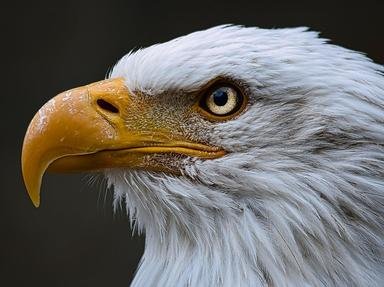Quiz Answer Key and Fun Facts
1. The beautiful northern cardinal is a common visitor to my backyard. These omnivores love sunflower seeds the most, but what do they typically feed their young?
2. What is the common name for Strix varia, sometimes called a hoot owl?
3. Who is this little guy who sings the most beautiful songs? His mate will often join him to form a harmonious duet.
4. These birds are related to the chickadee and have young ones who will actually stick around and help care for the next brood. What do we call these black-crested birds?
5. Which of the following is NOT a reason why the red-bellied woodpecker will loudly peck at a tree?
6. Who is this polyglot that is known to sing just about any time of day or night?
7. Not being a dummy, what is unusual about the eastern bluebird's singing?
8. Like most raptors, red-tailed hawk females are typically larger than males.
9. What unusual thing does the colorful American goldfinch do twice a year making it unique among finches?
10. Like the mariners of antiquity, which method do ornithologists think indigo buntings primarily use for migration?
Source: Author
BigTriviaDawg
This quiz was reviewed by FunTrivia editor
rossian before going online.
Any errors found in FunTrivia content are routinely corrected through our feedback system.
